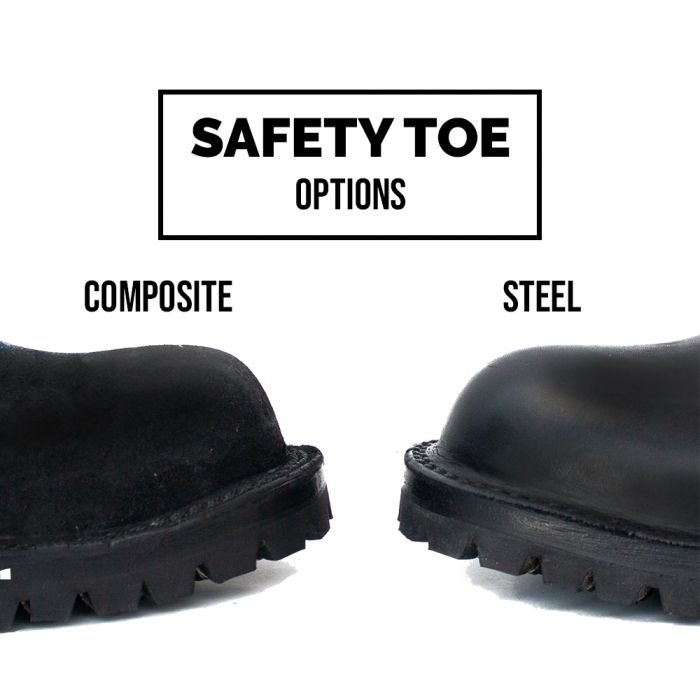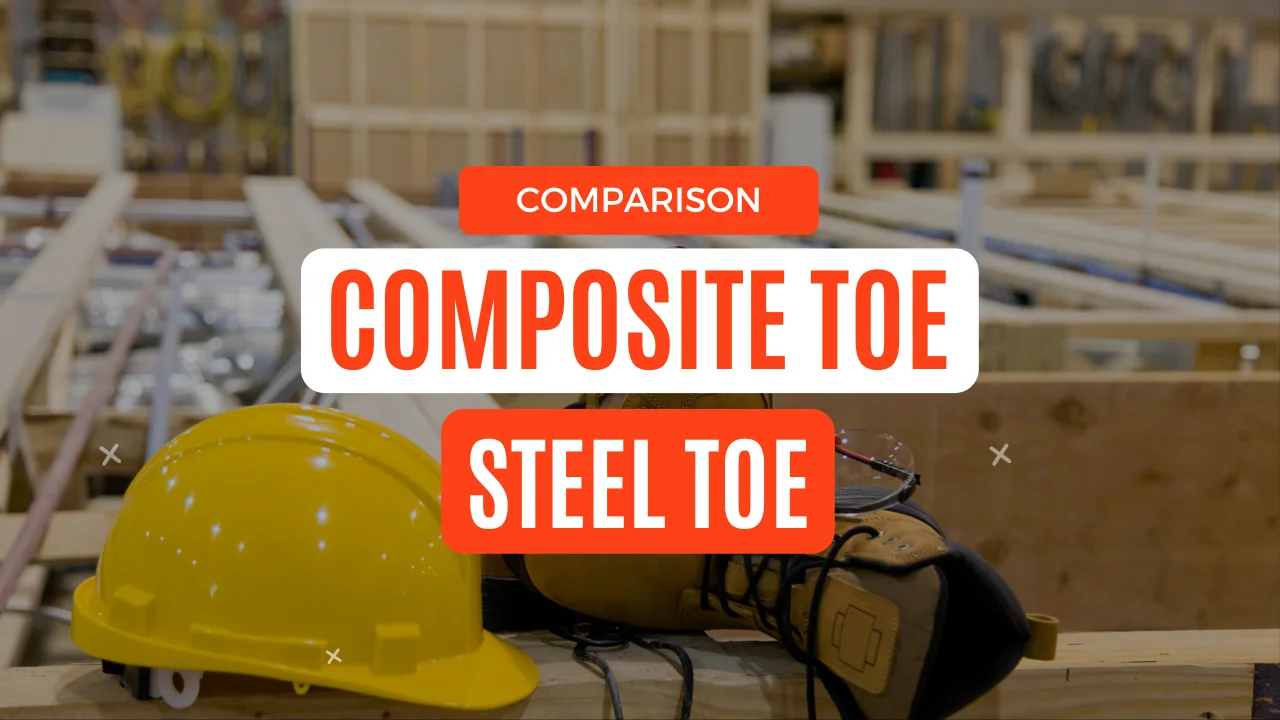When it comes to safeguarding your precious feet on the job, you’ve got some critical decisions to make. Get ready for a close look at a showdown between two strong protectors for your feet: the Steel Toe and the Composite Toe. This isn’t your usual safety shoe talk, so get ready! for a quick comparison between composite toe vs steel toe boots. If you’re a pro at your job, it’s time to figure out which is better for your feet.
Is steel toe or composite toe boots better?

Source: nicksboots.com
Steel toes have long been the standard, known for their incredible strength and durability. On the other hand, composite toes offer a lighter and more comfortable option without compromising safety. Exploring the differences helps you decide which one suits your work style and provides the best protection, ensuring your peace of mind throughout the workday.
What is steel toe?
Imagine your work boots having a secret weapon – the steel toe! It’s like a rigid shield but for your toes. These heroes in your footwear are here to protect you from falling stuff, sharp things, and unexpected accidents. They’re like your work buddies, always ready for action, ensuring your feet stay safe no matter where you work.
What is a composite toe? Composite Toe vs Steel Toe
It’s like the modern superhero of work boots, made from fancy materials like fiberglass, carbon fiber, and strong plastic instead of steel. Visualize it as a lightweight but super tough shield for your toes. It protects your feet from heavy, sharp, and job dangers. So, if you want a toe protector that’s not heavy but still strong, the composite toe is your work buddy!
Critical Differences Between Composite Toe and Steel Toe
Material:
- Composite Toe: They are made from non-metallic materials such as fiberglass, carbon fiber, and plastic.
- Steel Toe: Made from solid steel, often alloyed for strength.
Weight:
- Composite Toe: Lightweight, making them more comfortable for extended wear.
- Steel Toe: Heavier due to the metal, potentially causing discomfort during long shifts.
Cold Weather Performance:
- Composite Toe: It does not conduct cold, offering better insulation in cold environments.
- Steel Toe: It can become freezing in winter, potentially leading to discomfort.
Metal Detector Sensitivity:
- Composite Toe: It does not set off metal detectors, making them suitable for security-sensitive areas.
- Steel Toe: It can trigger metal detectors, requiring extra scrutiny in specific settings.
Comfort and Flexibility:
- Composite Toe: It is more flexible and comfortable due to lighter materials.
- Steel Toe: It tends to be less flexible and may cause fatigue during extended hours.
Protection Level:
- Composite Toe: It Provides good protection against impacts but slightly less than steel toes.
- Steel Toe: It Offers superior protection against impact, compression, and heavy falling objects.
Durability:
- Composite Toe: It is durable but may wear out faster, especially in high-impact environments.
- Steel Toe: Highly durable and resistant to wear and tear.
Price:
- Composite Toe: Generally more expensive than steel toes.
- Steel Toe: Typically, it is more affordable.
Suitable Work Environments:
- Composite Toe: Versatile and suitable for various work environments, especially those with security or metal sensitivity concerns.
- Steel Toe: It is ideal for heavy-duty and hazardous environments where maximum protection is required.
Weight and Fatigue:
- Composite Toe: Lighter weight reduces foot fatigue, making them ideal for workers on the move.
- Steel Toe: Heavier weight may lead to more significant fatigue during extended use.
Electrical Hazard Protection:
- Composite Toe: It provides electrical hazard protection, making them a good choice for electricians or those working around live wires.
- Steel Toe: It also offers electrical hazard protection, especially with other safety features.
Non-Metallic:
- Composite Toe: Completely non-metallic, reducing the risk of conductivity and corrosion.
- Steel Toe: It contains metal, which can conduct electricity and rust over time.
Are composite toes the same as steel toes?
Composite toes offer the same level of protection without the extra weight and bulk.
Picture this: you’re in an office, hustling from one end to another. A steel toe boot might feel like you’re lugging around a brick, while a composite toe cap feels like a comfy sneaker – way more office-friendly.
But here’s the catch: composite toes have limits. They won’t bounce back after specific heavy impacts, so they’re not superheroes. Plus, they might not last as long as steel toes. And if they do get damaged, there’s no magical fix.
So, if you’re in a place where lightweight comfort and protection are the top priority, composite toes are your go-to heroes.
Composite toe vs steel toe cap pros and cons
Composite Toe Caps:
Pros:
- Lightweight: Your feet will thank you for the reduced weight.
- Non-Conductive: They won’t conduct electricity, ideal for electrical work.
- Comfort: Flexible and comfy, great for long hours on your feet.
- Security-Friendly: Won’t set off metal detectors.
Cons:
- Impact Limit: Can’t handle extreme impacts like steel.
- Durability: It may wear out faster in heavy-duty environments.
- Repair Challenge: They can’t permanently be fixed if they get damaged.
Steel Toe Caps:
Pros:
- Maximum Protection: Top-tier protection against heavy objects and impacts.
- Durability: Built to last in harsh conditions.
- Lower Cost: They are generally more budget-friendly.
Cons:
- Weight: Heavier and less comfortable for extended wear.
- Cold Feet: Can get cold in winter weather.
- Metal Detectors: May set off security alarms.
Wrap up
It’s like choosing between your favorite sneakers and trusty boots.
Composite toes are your sneakers – light, comfy, and perfect for those who are always on the move. Whether you’re racing through the day or dancing through tasks, they’ve got your feet covered. No alarms, no fuss.
Steel toes are your reliable boots – strong, rugged, and ready for the tough stuff. They step up to the plate when you need that extra layer of protection for the heavy lifting.
So, as you choose, keep your daily adventures in mind. Whether striding in sneakers or stepping out in boots, your safety is the story’s hero. Lace up and tackle the world with confidence!

